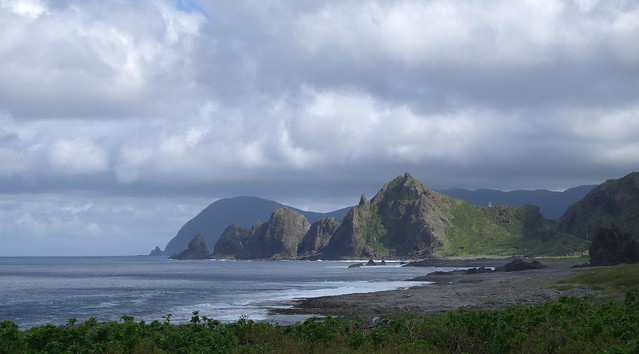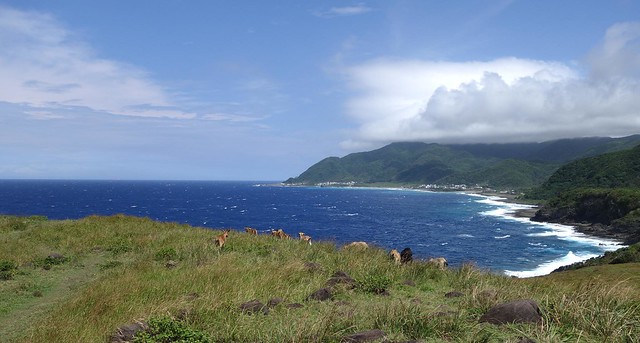
Background: this link
1. THE DEVELOPMENT OF OFFSHORE TUNA LONGLINING FISHERY IN PRE-WAR TAIWAN
Tuna longlining fishing was introduced to Taiwan in 1912. This new fishery developed separately in Taihoku State and Takao State. In Taihoku, fishers used Kiryu and Sooku as their home ports and fish in the nearby fishing grounds. The early development of Taihoku’s tuna longlining fishery was very difficult, partly because fishers were not familiar with the fishing grounds of the tuna fishery, and partly because mackerel, the major source of tuna fishing bait, was expensive. Fortunately, the problem was soon solved after fishers began using mullets and milkfish as tuna bait. Local fish farms provided longlinermen with large quantities of milkfish at reasonable prices. In 1918, people in Taihoku started to export tuna products to Japan.2 The success of tuna trading between Japan and Taiwan greatly accelerated the development of the tuna fishery in northern Taiwan, because both the Sooku and Kiryu fishing ports were geographically close to Japan, the main market for tuna products [see Map 1].3 In 1923, the Japanese government spent ¥ 650,000 constructing the fishing infrastructure of the Sooku Fishing Port. The new-built port facilities not only reduced the running costs of longliners, but also encouraged Japanese fishers from Oita and Ehime to use Sooku as their homeport. In the early 1930s, more than one hundred fishing vessels were using Kiryu and Sooku as supply bases.
When tuna longlining fishing was first introduced to the Toko and Takao fishing ports, local fishers only used sail-powered boats in coastal waters. They even believed, wrongly, that sail powered longliners were more suitable to harvest tuna than motored vessels. However, the situation gradually changed after the mid-1910s when Taiwan’s tuna fishing industry gradually expanded its fishing territories to greater distances which only motored vessels could reach.5 he success of the motored tuna longlining industry in northern Taiwan greatly encouraged fishers in the south to motorise their boats.
The development of the tuna fishing industry in southern Taiwan soon caught up with that of northern Taiwan for three reasons. Firstly, fish farms in southern Taiwan harvested large amounts of mullets and milkfish, which provided local longlinermen with sufficient fishing baits for their commercial fishing activities. Secondly, both the Takao and Toko fishing ports were adjacent to Southeast Asia, the most important tuna fishing ground in the pre-war years.7 Thirdly, armed with refrigeration facilities, tuna longlinermen in southern Taiwan also started to export their tuna products to Japan after 1923. By 1928, approximately 150 offshore longliners were installed with 30-horsepower engines in southern Taiwan. Some large-sized longliners were even installed with 120-horsepower engines.8 The number of motored longliners in southern Taiwan increased at a great speed, which enabled fishers to expand their fishing territories from coastal waters to the heart of Southeast Asian waters.9The development of the tuna fishery in the south of the island soon exceeded that of the north.
.....
The centre of Taiwan’s tuna longline fishery shifted from the north to the south of the island due to two reasons. Firstly, the tuna fishing grounds off northern Taiwan extended only fifty or sixty miles from the northeastern coast of Taiwan to the Senkaku Islands where the Japan Current passed by. However, the tuna fishing grounds off southern Taiwan were vast and productive. Secondly, the southward expansion of tuna fishing was also greatly encouraged by the fishing authorities.13Many research vessels were built by the fishing authorities of Taiwan to conduct fishing experiments and research. In 1929, the Takao State Government built Takao-maru, which was installed with a 320-horsepower engine and had a displacement of 320 tonnes. In 1931, the Central Colonial Government built Shonan-maru. It had a displacement of 418.9 tonnes and was installed with a 500- horsepower diesel engine.14These two experimental ships were considered very large in the early 20th century. Besides conducting fishing experiments with research vessels, fisheries experts also went to sea with civilian tuna longliners, or entrusted fishing experiments to fishing companies whose longliners operated in the waters of Southeast Asia.15 Encouraged by the Government’s fishing experiments, the tuna longliners from southern Taiwan continually expanded their fishing territories southward. In 1928, the most distant fishing grounds that they could reach were 250 miles from the coast.16 In 1934, some tuna longliners had fished in the waters of the Sulu Sea, and even the Celebes Sea.17
In addition to the availability of vast and productive tuna fishing grounds in Southeast Asia, the Southward Development Policy (Nanshin Seisaku) of the Japanese colonial government also had a profound influence on the southward expansion of Taiwan’s tuna fishing territories. In 1936, Kobayashi Seizo, a Naval Reserve Admiral, was appointed Taiwan’s Governor-General. He introduced three important policies soon after assuming office; the Assimilation Movement (Kominka), the Policy to Industrialise Taiwan (Kogyoka), and the Policy to Shape Taiwan as a Stronghold for Southward Development (Nanshin Kichika). The latter is also known as the Southward Development Policy. The southward presence and regional movement of the Japanese navy directly encouraged the southward development of Taiwan’s fishing industry. The military expected fishing boats to collect intelligence information for the navy, and fishing vessels from Taiwan were also keen to offer strategic services.18 Tuna longliners from southern Taiwan now became more active in the waters of Southeast Asia than before. They even entered the waters of the Philippines, Indochina and Borneo, and conducted fishing activities in the coastal waters of those countries.
1. When did longline tuna fishing reach Taiwan?
2. What key technology from Japan enabled Taiwanese fishermen to expand southward?
3. List two major policy moves by Japan that drove Taiwanese fisherman southward to find tuna?\
2. Taiwan News Report
4. Hard question: What is the politics behind the increase in Taiwan fishing boats in Senkakus waters?
-- which political party is close to the fishermen? How does it benefit?
References:
3. Taiwan fishermen -- human rights and environmental abuses
Apple Daily









